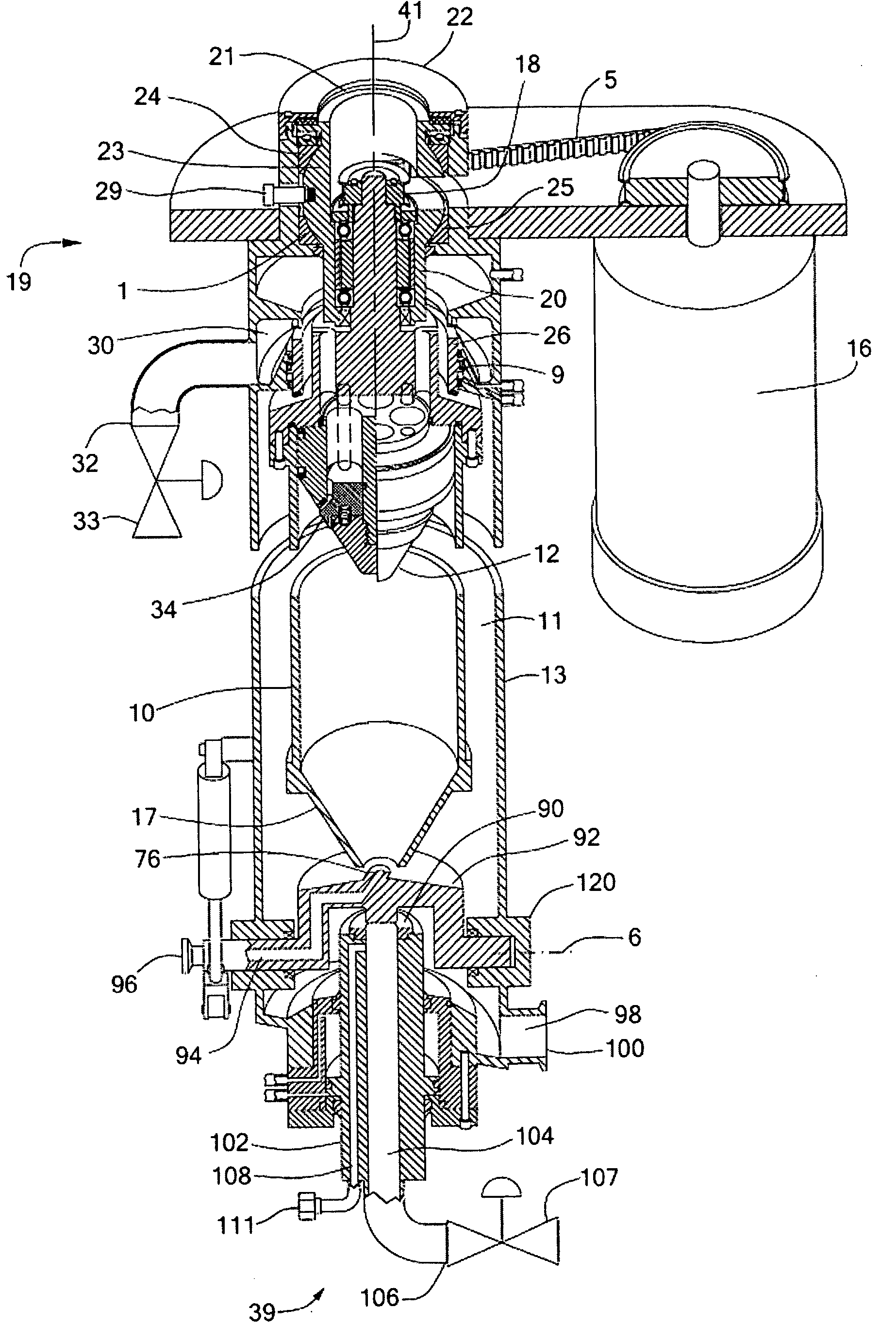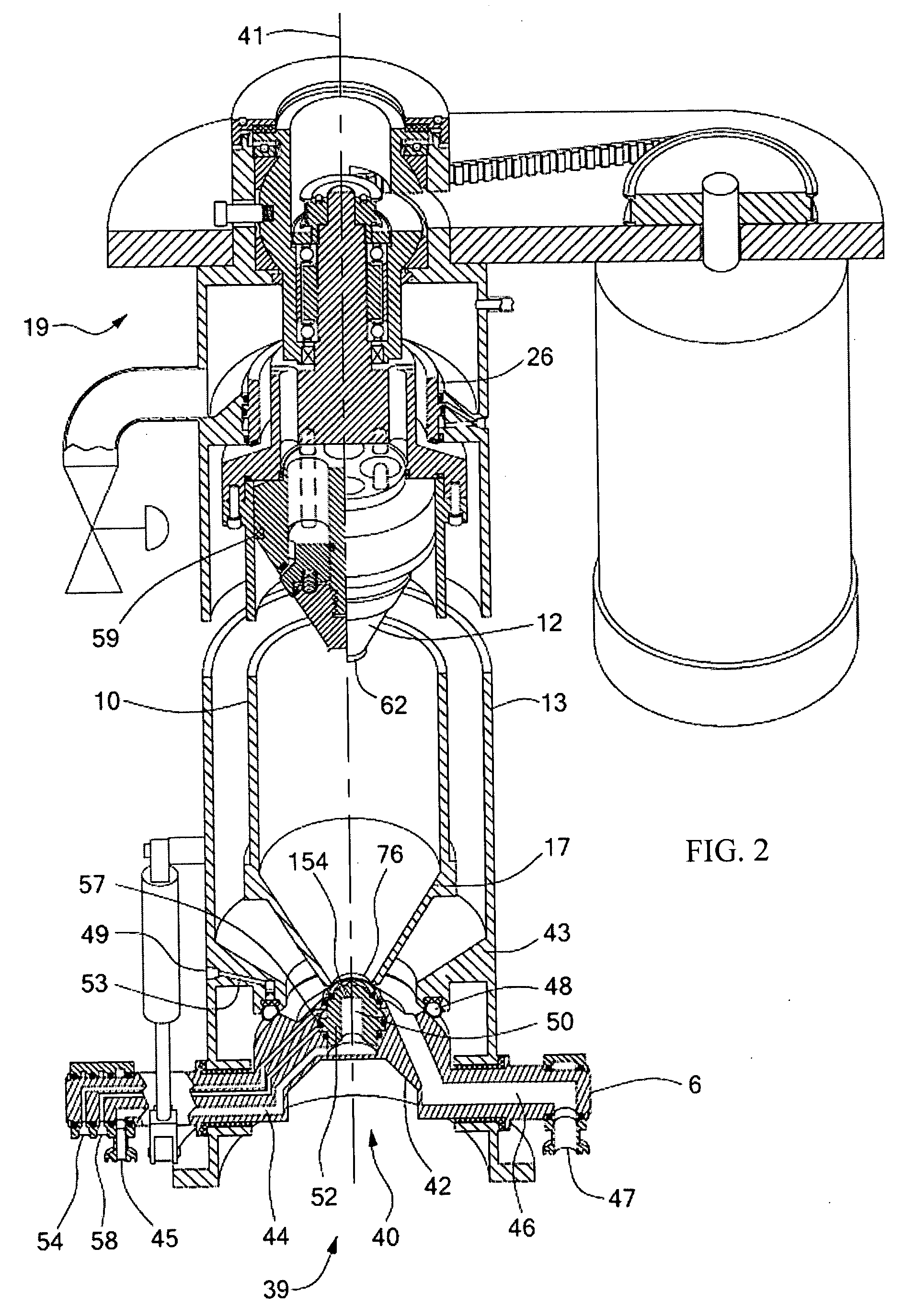Solids recovery using cross-flow microfilter and automatic piston discharge centrifuge
a technology of automatic piston discharge and microfilter, which is applied in the direction of centrifuges, membranes, multi-stage water/sewage treatment, etc., can solve the problems of damage, poor yield, and sensitive chemical or biological substances such as intact cells,
- Summary
- Abstract
- Description
- Claims
- Application Information
AI Technical Summary
Benefits of technology
Problems solved by technology
Method used
Image
Examples
Embodiment Construction
[0050]FIG. 1 shows a centrifugal separator in vertical section, with a middle portion removed so as to illustrate a horizontal section as well. The centrifugal separator includes a cylindrical separator bowl 10 mounted in a central region 11 of a separator housing 13. Preferably, the separator bowl can be of a length that is greater than a diameter thereof. By having the length of the bowl longer than its diameter, “end effects” in the bowl can be minimized with respect to the bowl's internal volume. In general, end effects can be caused by fluid eddies along any of the angled portions within the interior of the bowl and, particularly, near the ends thereof. In one embodiment, the separator bowl 10 can be a cylindrical type bowl having a relatively small diameter D and a length L such that the ratio of L / D is approximately 5 / 1 or greater. Such a ratio of L / D tends to prevent axial waves from developing within the bowl as such waves substantially dissipate as they travel the length o...
PUM
| Property | Measurement | Unit |
|---|---|---|
| of rotation | aaaaa | aaaaa |
| concentration | aaaaa | aaaaa |
| turbidity | aaaaa | aaaaa |
Abstract
Description
Claims
Application Information
 Login to View More
Login to View More - R&D
- Intellectual Property
- Life Sciences
- Materials
- Tech Scout
- Unparalleled Data Quality
- Higher Quality Content
- 60% Fewer Hallucinations
Browse by: Latest US Patents, China's latest patents, Technical Efficacy Thesaurus, Application Domain, Technology Topic, Popular Technical Reports.
© 2025 PatSnap. All rights reserved.Legal|Privacy policy|Modern Slavery Act Transparency Statement|Sitemap|About US| Contact US: help@patsnap.com



